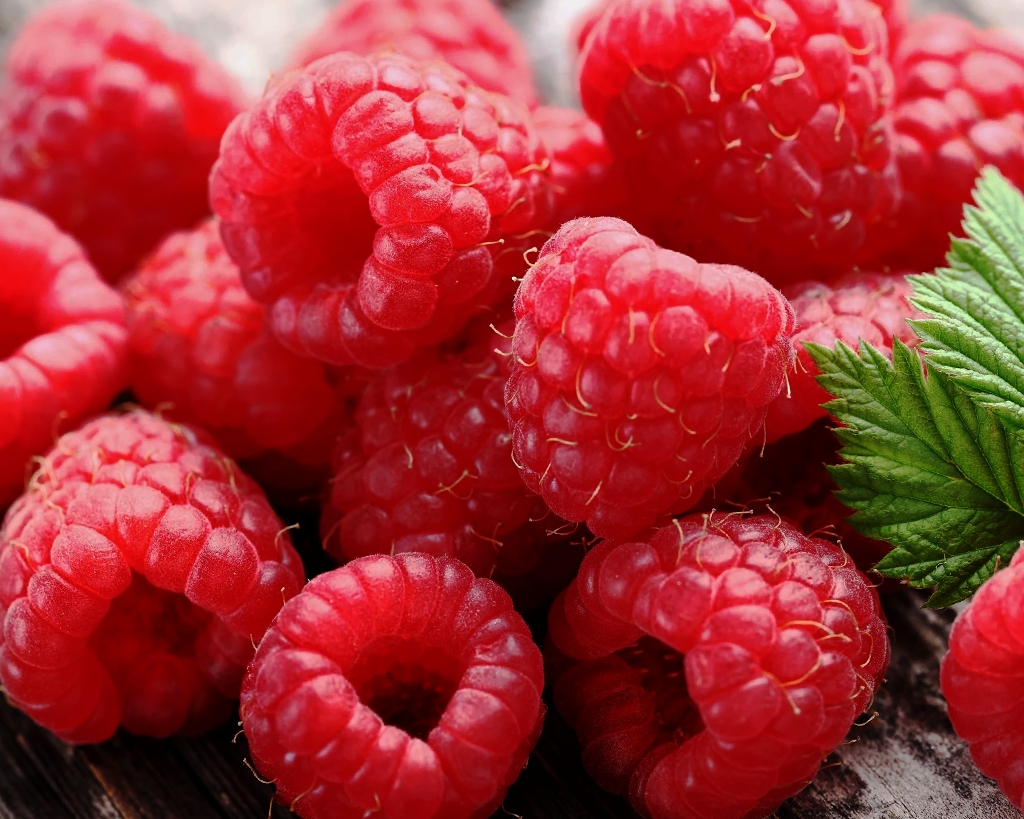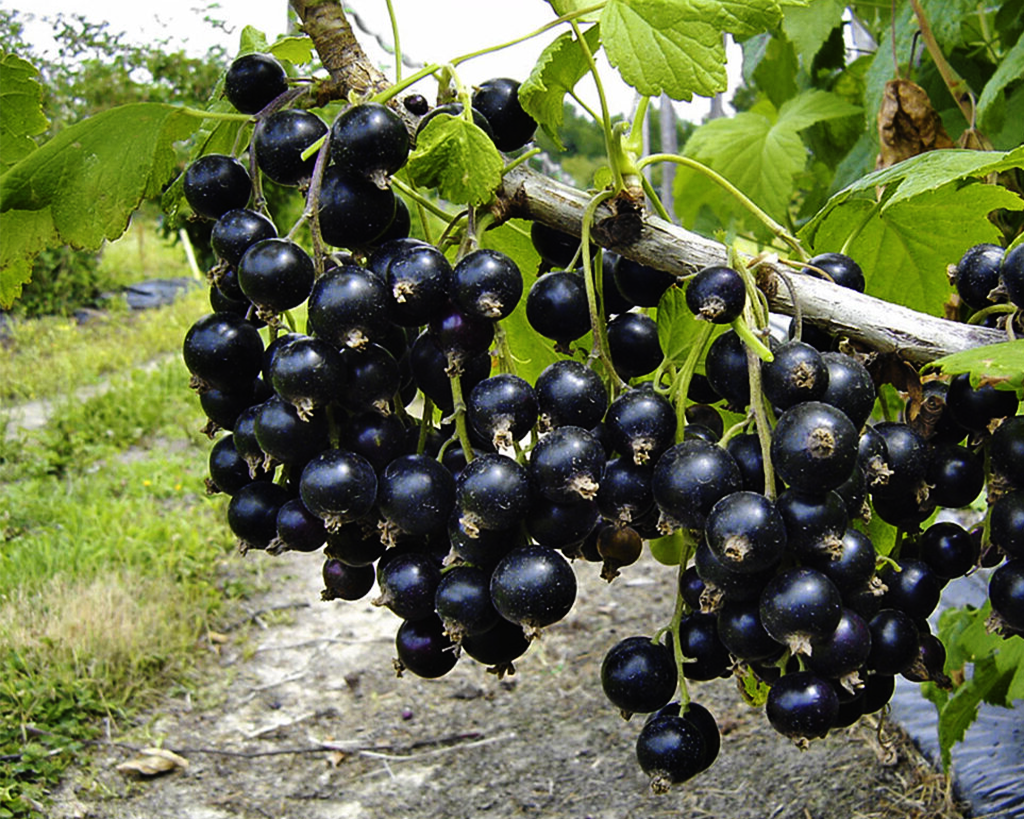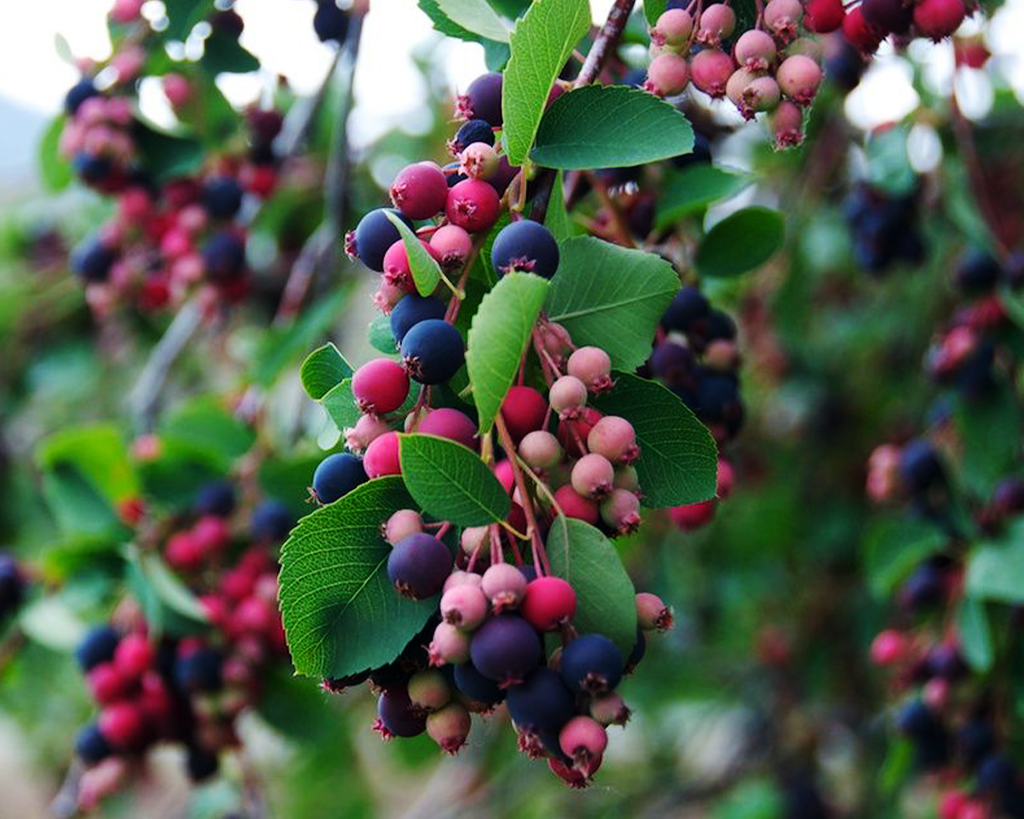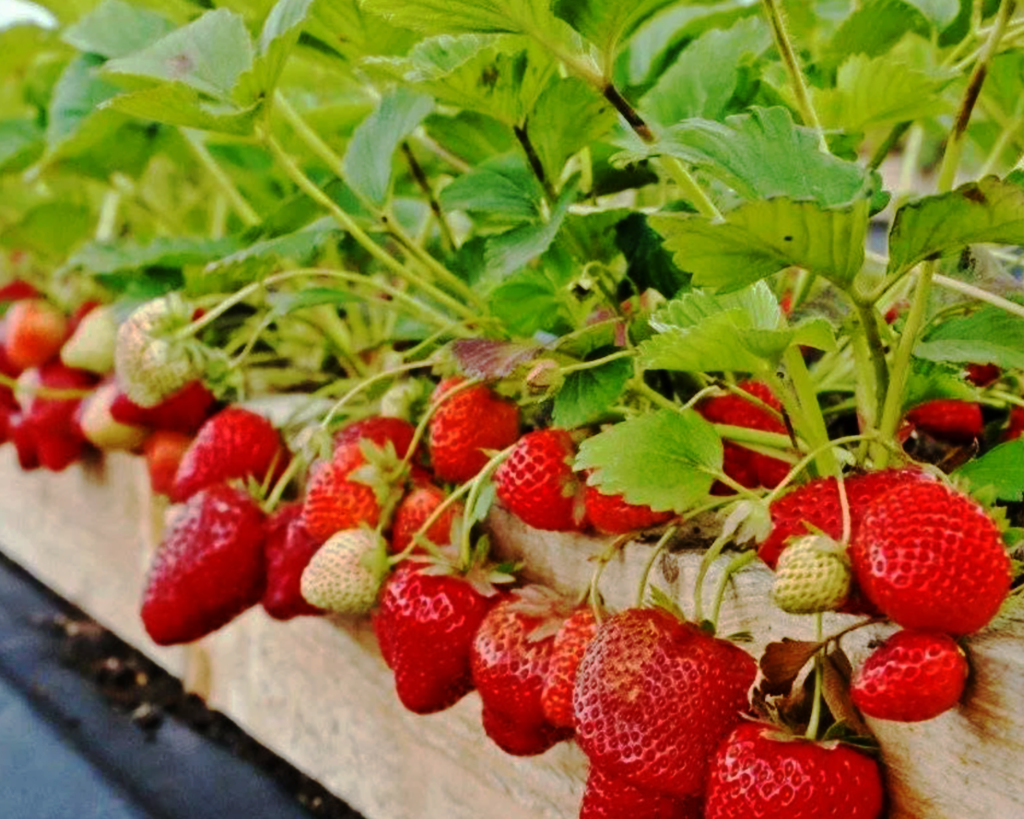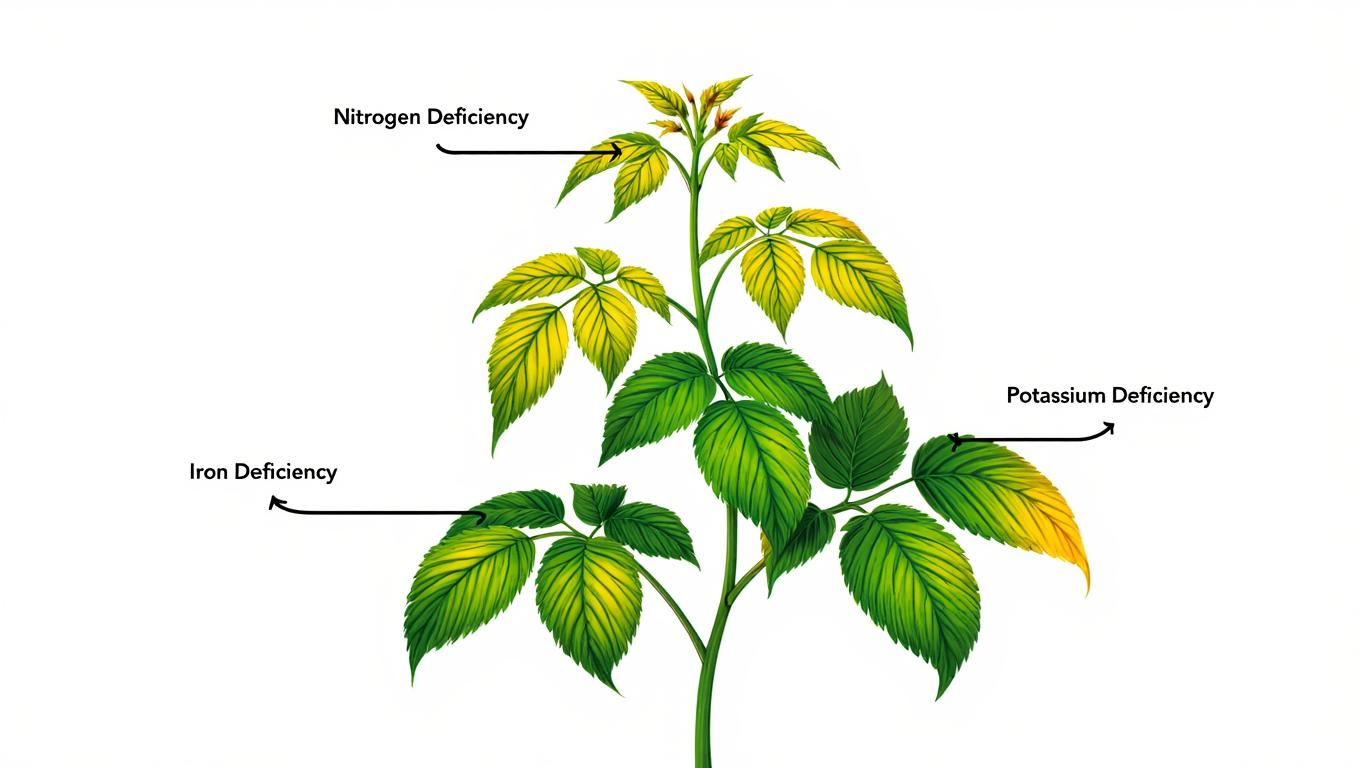Raspberries are a favorite berry of many gardeners! Imagine a sunny summer day: you walk around the garden and see how bright, juicy berries hang from the branches. But to make the bushes happy with the harvest, it is important to choose the right soil, keep the planting clean and provide competent care. In addition to the classic red, raspberries can be yellow, black and even purple! Let’s find out what its benefits are, how to plant bushes and take care of them so that you can enjoy sweet berries every season.
At the end you can download a brochure in which you’ll find a decision checklist, spacing and planting steps, a simple trellis plan, watering and feeding rules, pruning by cane type, a seasonal calendar, and a small row-planning worksheet.

Types of raspberries
There are several known species, each of which has its own unique characteristics. The most common ones:
- Red
is the most famous and popular variety. The berries are red, sweet and juicy. They are ideal for fresh consumption, making jams and jams. - Yellow
is less well-known, but no less delicious. The berries have a golden hue and have a soft, sweet taste. They are often used in desserts and baked goods. - Black
Has a dark purple, almost black color. Berries have a rich taste and aroma. Black raspberries are especially prized for their high antioxidant content. - Magenta
is a hybrid between red and black. The berries have an unusual purple color and combine the features of both parents.
Each has its own characteristics, but they are all equally useful and tasty.
The benefits of raspberries
Delicious berry-raspberries are associated with summer, grandmother’s jam and childhood. This is a real superfood that brings great benefits to our body. Let’s look at why this plant deserves a place not only in your dessert, but also in the list of must-have health products.
To begin with, it is a storehouse of vitamins and minerals. It contains vitamin C, which is known to be a powerful ally of our immune system. If you want to be less sick, especially during the cold season, feel free to brew the stems and enjoy an unsurpassed drink. Vitamin C not only strengthens the immune system, but also helps the body to cope faster with diseases that have already begun. By the way, this is why raspberry jam or tea with raspberries is the first thing that we are offered for colds. And this is not just folk wisdom, but a well-founded recommendation!
But the benefits don’t end there. Berries also contain vitamin K, which plays an important role in blood clotting and bone health. If you want your bones to be strong and your wounds to heal faster, raspberries can help you. In addition, it contains a lot of antioxidants-substances that fight free radicals. What does it mean? Free radicals are harmful molecules that damage our cells and accelerate aging. Antioxidants also neutralize their effect, helping to preserve youth and health..
Raspberries are good for the heart. It contains fiber, which helps reduce the level of “bad” cholesterol in the blood. And this, in turn, reduces the risk of developing cardiovascular diseases. In addition, the antioxidants that we have already mentioned also contribute to heart health, protecting blood vessels from damage..
And now let’s talk about the figure. Raspberries are an ideal product for those who monitor their weight. First, it is low in calories: 100 grams contain only about 50 calories. Secondly, it is rich in fiber, which helps you feel full longer and improves digestion. It can be added to yogurt, porridge, or simply eaten fresh.
But that’s not all! Raspberries have anti-inflammatory properties. This means that it can help with various inflammatory diseases, whether it’s arthritis, joint problems, or even skin inflammation. In traditional medicine, raspberries are often used to relieve the symptoms of colds, flu, and other diseases associated with inflammation. And, by the way, not only berries, but also the leaves of the plant have useful properties. From them, you can brew tea, which helps with colds and strengthens the immune system.
Raspberries are a real gift of nature! Its sweet, slightly tart taste makes it a versatile product. It can be eaten fresh, added to desserts, made into juices, compotes, jams and even sauces for meat. It is perfectly combined with other berries and fruits, as well as with dairy products.
If you have the opportunity, be sure to include raspberries in your diet. And not only in season, but also in winter — frozen berries retain most of their useful properties. Stay healthy and enjoy!

Growing Raspberries
Ideal for those who want to get a delicious and healthy harvest, but at the same time do not spend too much time and effort on caring for plants. Raspberry is a fairly unpretentious crop, but, like any plant, it has its own preferences. Still, there are a few important points to consider.
Landing
Choosing a landing site
Raspberries love the sun, so try to choose a well-lit area for them. Ideally, this should be a place where the sun’s rays will fall on the bushes most of the day. Why is this important? Because the sun not only promotes the growth of the plant, but also makes the berries more sweet and fragrant. If planted in the shade, it will certainly grow, but the harvest may be less plentiful, and the berries may be more acidic.
Another important point is that the soil prefers well-drained land, that is, one where water does not stagnate. If puddles form on your property after rain that don’t dry out for a long time, this is a bad sign. Raspberries do not like “wet feet” — excess moisture can lead to rotting of the roots and death of the plant. Therefore, if you have heavy, clay soil, you should take care of drainage in advance. You can add sand or compost to the ground to improve its structure and make it more friable.
Planting raspberries
Now about the landing itself. Shrubs are usually planted either in spring or autumn. If you choose spring, then it is better to do it before the buds begin to bloom. Autumn planting is carried out a few weeks before the onset of frost, so that the plant has time to take root. Seedlings are planted in prepared pits or trenches, the distance between the bushes should be about 50-70 cm, and between the rows — 1.5-2 meters. This is necessary so that the plants have enough space to grow, and they do not interfere with each other.
After planting, raspberries should be well watered and mulched. Mulch is a layer of organic material (such as straw, sawdust, or compost) that is laid around plants. It helps to retain moisture in the soil, protects the roots from overheating in summer and from the cold in winter, and also suppresses the growth of weeds. Mulching is a simple but very effective way to care for raspberries, which makes life much easier for the gardener.
Raspberry care and watering
Now let’s talk about raspberry care. Raspberries are unpretentious, but they still need minimal care. First, it is watering. She likes moist soil, but not waterlogged. Water it regularly, especially during dry periods, but do not allow stagnation of water.
Secondly, it is top dressing. The bush respond well to organic fertilizers, such as compost or rotted manure. They can be applied in spring or autumn. You can also use mineral fertilizers, but here it is important not to overdo it — excess nitrogen, for example, can lead to the fact that the plant will begin to actively build up foliage to the detriment of fruiting.
Raspberry pruning
Another important point is pruning. Raspberries bear fruit on shoots of the second year, so after harvesting, old shoots should be removed. This stimulates the growth of new shoots, prevents the spread of diseases and pests. In the spring, it is also worth carrying out sanitary pruning, removing all damaged or weak branches.
Raspberry pests
Finally, don’t forget to protect yourself from pests and diseases. Raspberries can suffer from such misfortunes as raspberry beetle, spider mite or fungal diseases. To avoid this, you can use folk remedies (for example, infusion of garlic or tobacco) or special preparations. The main thing is to notice the problem in time and take action.
Growing raspberries is not as difficult as it may seem at first glance. If you choose the right place, prepare the soil, regularly water and feed the plants, and do not forget about pruning and protection from pests, then your raspberry garden will definitely thank you with a plentiful harvest of delicious and healthy berries. And what could be better than picking fresh berries straight from the bush and enjoying their unique taste!

Using Raspberries
Raspberries are versatile to use. It can be consumed fresh, added to salads, made jams, jams, juices, syrups and much more. Here are some ideas:
- Fresh raspberries are perfect for snacking or adding to yogurt, cottage cheese, or oatmeal.
- Jamming is a great way to preserve raspberries for the winter. Jam can be used for sandwiches, pancakes or pies.
- Compotes and fruit drinks. Fresh or frozen berries can be used to make refreshing drinks.
- Raspberries are perfectly revealed in baking. Pies, cakes, cookies – perfectly combined with the dough and gives baking a pleasant taste and aroma.
- Bushes are used in cosmetology — just imagine, raspberry masks moisturize the skin, give it a fresh look and fight the signs of aging.
What conclusion can we draw — raspberries are not only delicious, but also extremely useful culture. Its variety of species allows everyone to find something different, and the simplicity of cultivation makes it accessible to all gardeners. If you have the opportunity, be sure to try planting raspberries in your garden. It will become one of your favorite plants!
Your overview is ready — grab the brochure: CD Raspberries: Planting and Caring — Mini Brochure (PDF)
